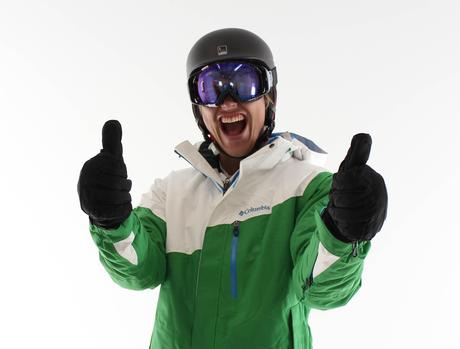
There are many factors which can help you decide which ski goggles and lenses are right for you. These are a necessary piece of ski gear and if you are serious about skiing and want to stay safe, this means protecting your eyes with the right eyewear. Not sure where to start? Follow these simple steps:
Step #1: Choose Goggles that Fit your Face
The best way to do this is try on a whole range of goggles to determine your size. Some may have adjustable straps around the back of your head or they may just have curved temples so that they fit snugly around your head.
You want the goggles to be a comfy fit that doesn’t have any gaps (i.e. the bridge of the goggles should sit perfectly on your nose), but also doesn’t squeeze your face too tight that it restricts the blood flow to your brain. After all, keeping balance does require a bit of concentration…!
Step #2: Choose the Lens Shape
A lens shape in your goggles will affect how well and how much you can see whilst skiing. The more money you spend on your goggles, the better quality of vision you should have.
Cylindrical lenses are fairly flat from eyebrow to cheek and offer a view of what’s in front of you without distorting the vision. These are also more prone to fogging.
Spherical lenses on the other hand are curved from each side of your face and also from eyebrow to cheek, sitting closer to the shape of your face. This offers a better accuracy of vision and better clarity of your peripheral vision.
Step #3: Choose a Lens Colour
Clear – No light blocking but is ideal for eye protection from flying grit or snow when skiing at night.
Pink/yellow – A combination of a few tints, this increases the contrast which makes different bumps in the ground stand out, especially when it’s cloudy or dark.
Bright red/orange – For medium bright light, this is great for all kinds of light and for good visibility.
Grey/black – Ideal for really sunny days, these lenses block out the most light. Good for wearing on bright days for better visibility on the snow and reducing glare.
Step #4: Choose the Right Coating and Tint
Coating is the thin layer that goes over the lens – a mirror coating reflects the glare from the snow and therefore helps vision.
A tint allows a certain amount of light to come through the lens. A darker tinted lens is better for clear conditions where you need to block out harsher rays, whereas a lighter tint is better suited for cloudier conditions or when there is lots of precipitation.
